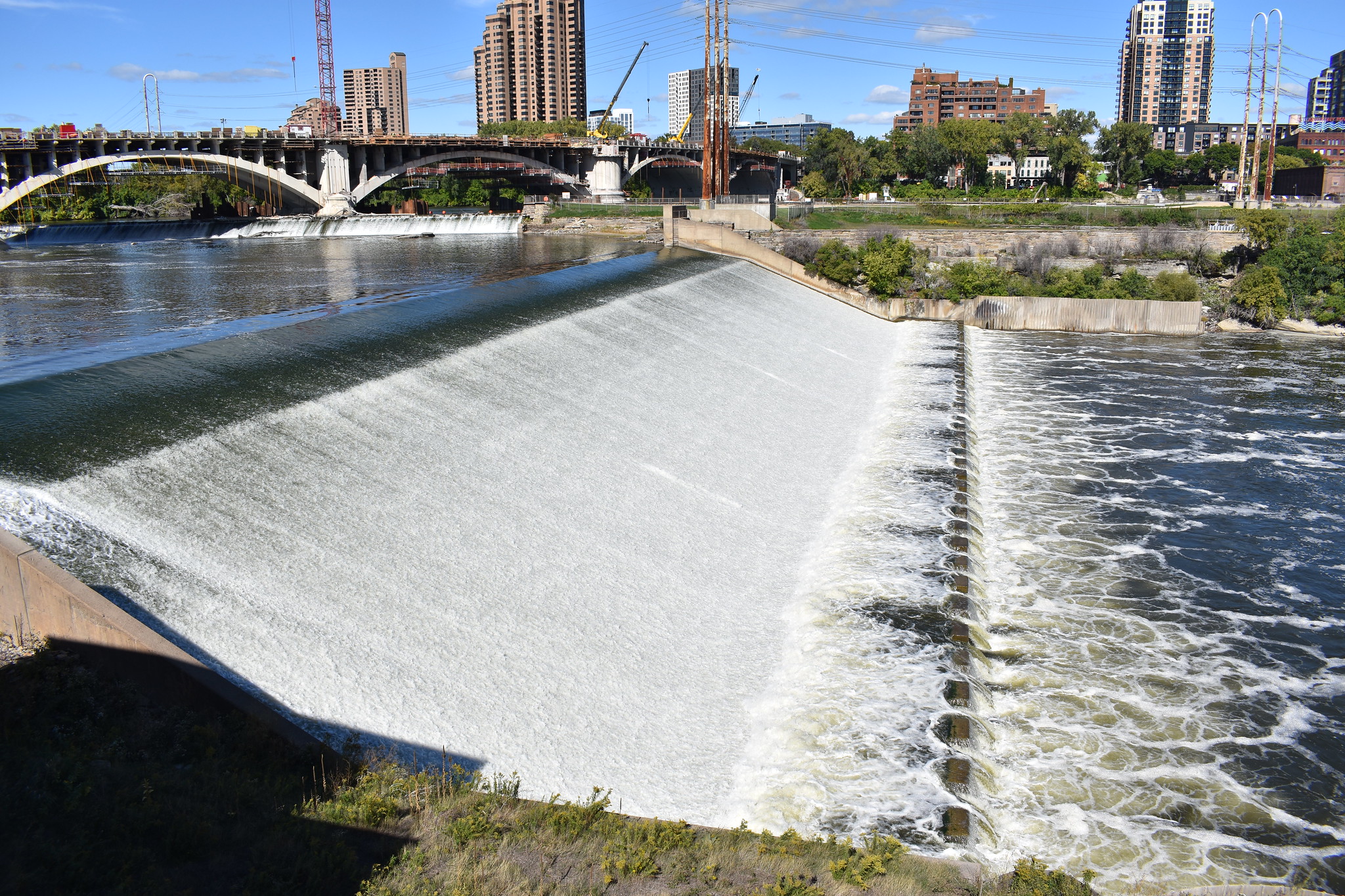Who owns the St. Anthony Falls cutoff wall? It's still being debated

The cutoff wall sits out of sight, under the river bottom just upstream of the iconic falls spillway.
With recent coverage from the Star Tribune, a little-known but important underwater wall at St. Anthony Falls continues to draw attention.
The cutoff wall is one of many structures constructed around the Falls or Owamniyomni. After local industries’ attempts to harness the falls’ power led to tunnel collapses and other hazards, the U.S. Army Corps of Engineers built the wall in 1876 to stabilize the area.
We know the wall is made of concrete, extends 40 feet under the bottom of the riverbed just above the falls and is an essential piece of infrastructure. And thanks to FMR River Guardians, our partners, Sens. Bobby Joe Champion and Erin Murphy, and Reps. Ginny Klevorn and Sydney Jordan, we will also know more about the wall’s condition in June 2026 when a University of Minnesota study is complete.
We don’t know who owns the wall, nor do we know who will be in charge of inspecting and maintaining it.
The Star Tribune piece by Susan Du, “Minnesota, feds play hot potato with hidden wall holding up St. Anthony Falls,” puts this ownership issue in the spotlight.
Ownership unresolved
The article notes that a recent document from the Army Corps “has been rankling Minnesota environmental organizations and the Department of Natural Resources (DNR).”
In a draft of the Corps’ disposition study for the Upper St. Anthony Falls Lock, the Corps declared, “The [river] channel remains the property of the State of Minnesota; therefore, any maintenance of the cutoff wall is subject to state appropriations.”
(The disposition study outlines long-term options for managing the lock, which is no longer in use.)
In a response letter, the Minnesota Department of Natural Resources expressed its “surprise” at this claim and stated the Corps "cannot legally construct a navigational project and then unilaterally decide that the State has ongoing responsibility for that project.”
In a letter to the editor that ran after the Star Tribune's story, a former Corps employee suggested the City of Minneapolis also has a role in what they called "this mess."
What comes next
The study of the wall, which FMR successfully advocated for in 2023, includes research on both its current condition and its history. However, the study does not intend to resolve the ownership issue, although archival research may provide insights. Eventually, Congress or the courts may need to make the call.
In the meantime, the St. Anthony Falls Lab’s study continues to gather as much data as possible to help policymakers make informed decisions about the wall’s future.
FMR will help share the study’s results next year. We’ll also keep FMR River Guardians and Mississippi Messages readers informed of next steps related to the ongoing conversation around nearby locks and dams.